After we had arrived and checked into the hostel we instantly bee-lined straight back to the conveyor-belt sushi place we’d spotted by the station. Unlike the tablet-ordering joints we’d been to before, this one was culinary roulette: the chefs loaded every kind of roll, nigiri, and seaweed-wrapped mystery onto the belt, and you just grabbed whatever happened to cruise past that took your fancy.
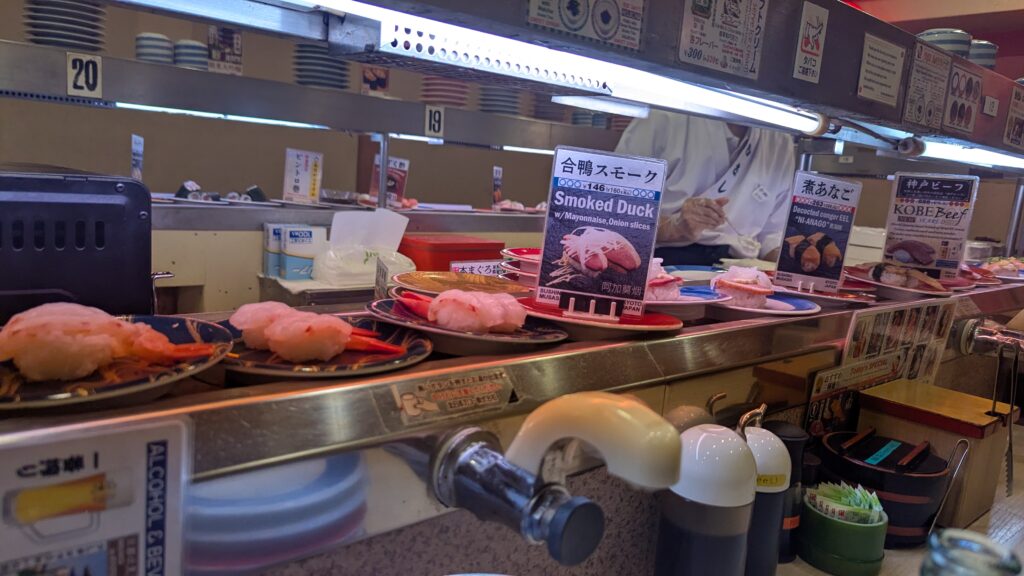
This meant I discovered a new surprise hit, a “clam salad” gunkan—slices of clam, avocado, and onion perched on rice and wrapped in seaweed. Plate colour set the price: big slabs of fish (sashimi and nigiri) cost more, veggie-heavy creations less. Conveniently, always a cheap date, my taste buds favoured the 75-pence plates, so I feasted until I was blissfully immobile and still spent only a tenner, drink included.
Grace, meanwhile, discovered the belt’s non- raw fish quota was… minimal. After two tempura prawns and a sweet-corn maki she was still peckish, so we detoured to the bakery next door. She stocked up; I squeezed in a carrot cake because, frankly, it felt like the perfect end to a lovely meal—even if conventional wisdom frowns on eating your entire calorie allowance in one sitting.
Post-feast we hurried back to the hostel for a quick unpack-and-shower turnaround, then set off for an evening walking tour of Shijō Keihan-mae, one of Kyoto’s storied geisha districts. An intro to geisha life. Contrary to Hollywood myth, geisha are neither courtesans nor relics of the past; they’re highly trained performing artists whose craft blends traditional dance, shamisen music, calligraphy, tea ceremony, casual witty conversation, and an encyclopaedic knowledge of seasonal etiquette. Girls who aspire to the profession usually enter an okiya (geisha house) around sixteen. Their first year is spent as shikomi—essentially live-in assistants learning Kyoto dialect, bow-until-your-spine-aches etiquette, and how to walk in the heels without knocking anything over, a feat I’ve yet to master! If they survive that boot camp, they become maiko (apprentices) and swap school uniforms for elaborate silk kimono, six-inch wooden okobo clogs, and iconic floral hairpins. Maiko shadow senior geiko (Kyoto’s word for geisha) to banquets, practising dance for hours daily and memorising hundreds of traditional songs. After roughly five gruelling years—and one symbolic tooth-blackening ceremony—they “turn the collar” to become full-fledged geiko, finally earning their own wages and a slightly less back-breaking kimono. Most live in the same neighbourhoods where they work; Kyoto still has five official hanamachi (flower towns), each with its own theatre, tea-houses, and resturants.
Because maiko and geiko are booked out months in advance by discerning clients, they usually sprint between engagements or call a taxi to dodge paparazzi tourists. That’s why catching a glimpse of two maiko gliding past us in full regalia felt like huge luck. Our guide pointed out hidden teahouse entrances and tiny wooden name plaques listing the resident geiko of each okiya. We also popped into hushed Shintō shrines where performers pray for nimble fingers and blister-free heels.
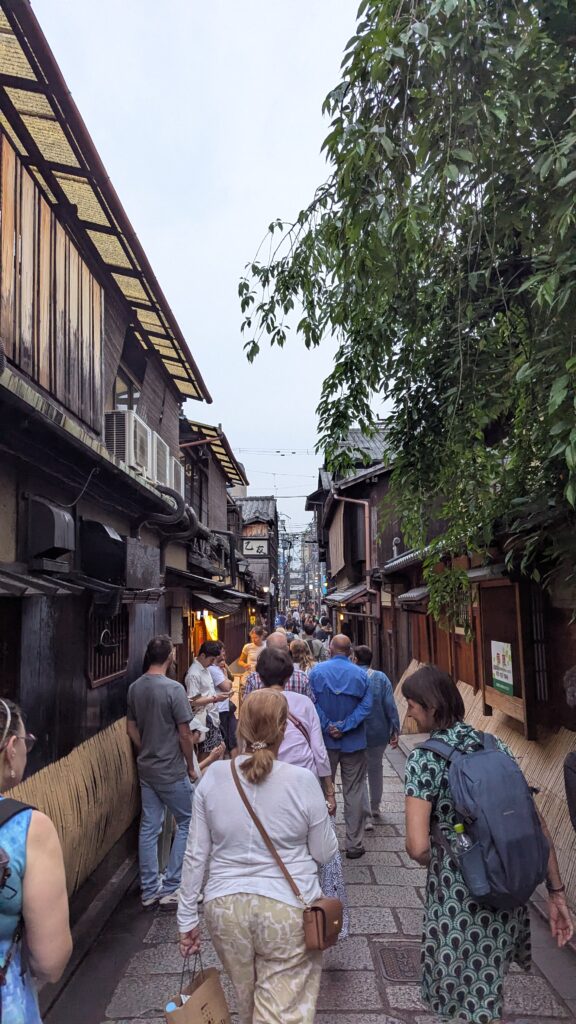
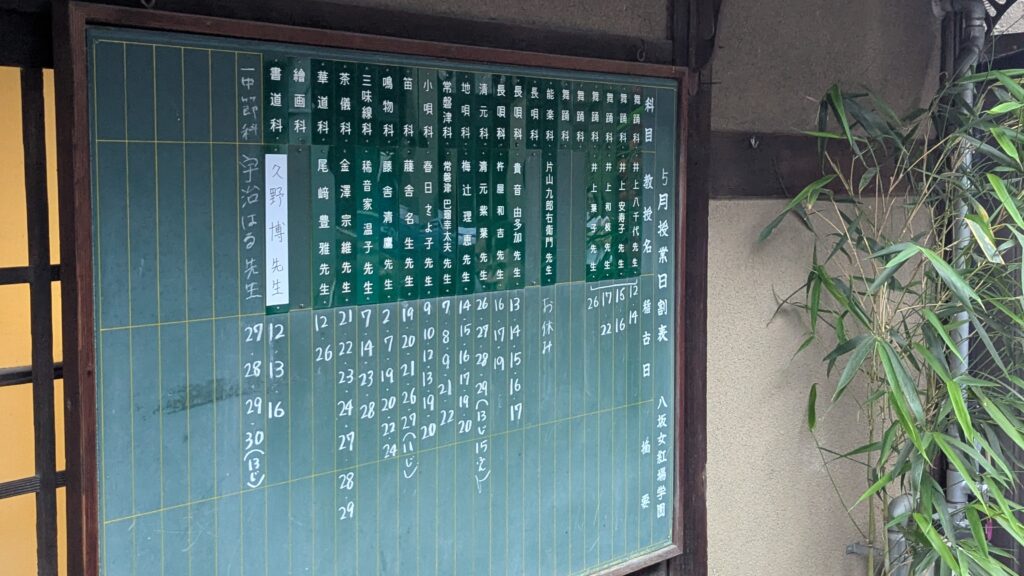
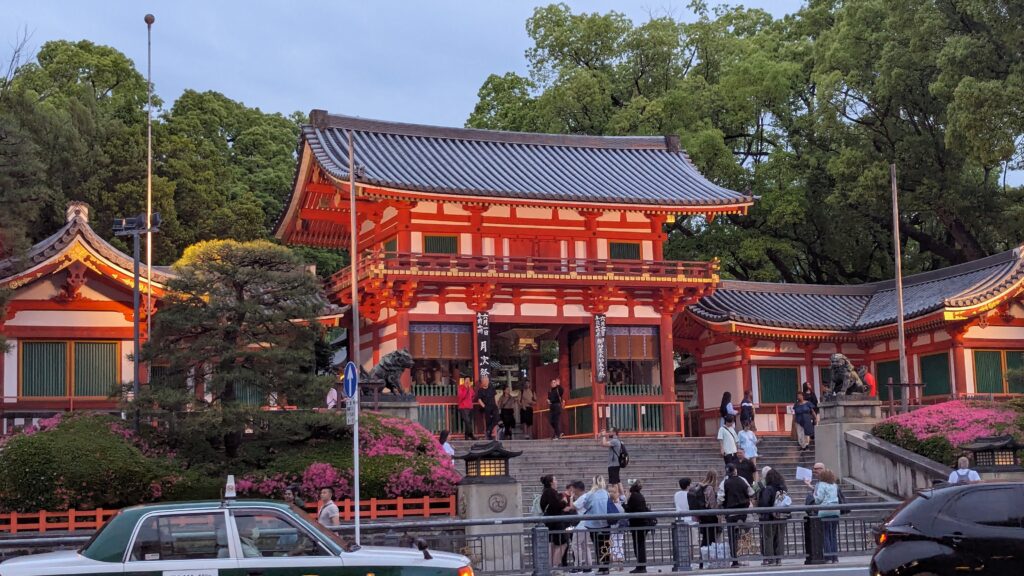
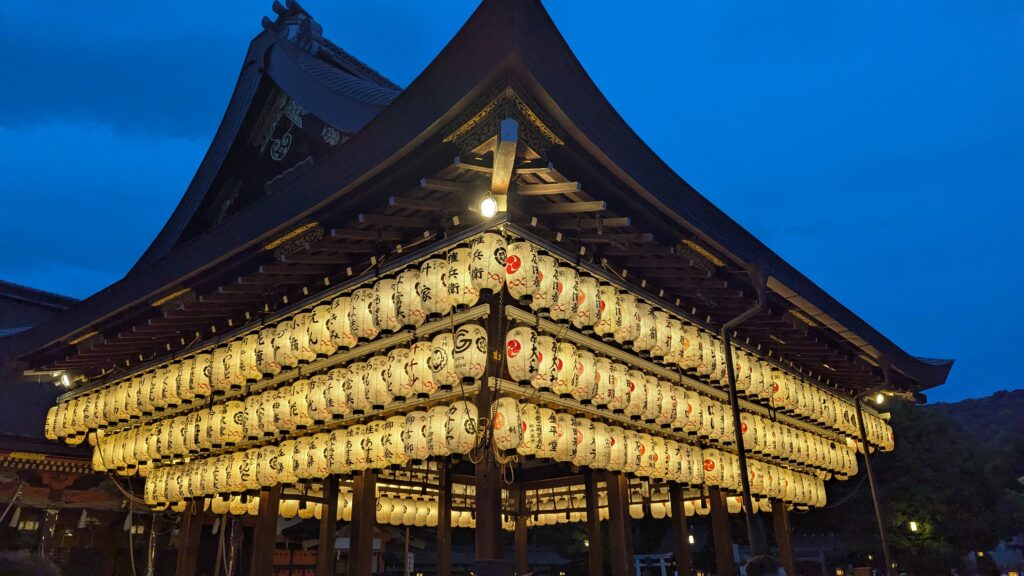
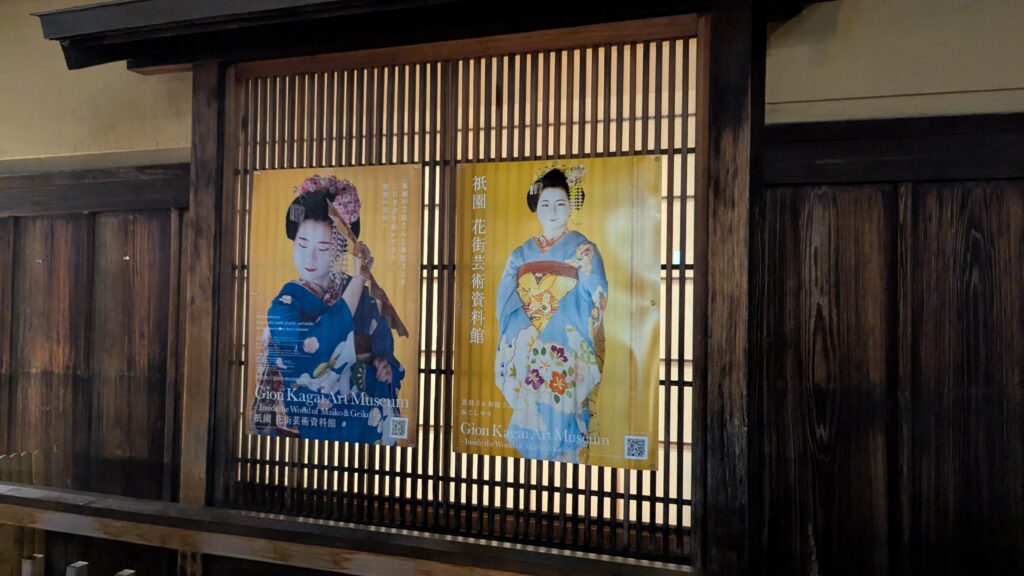
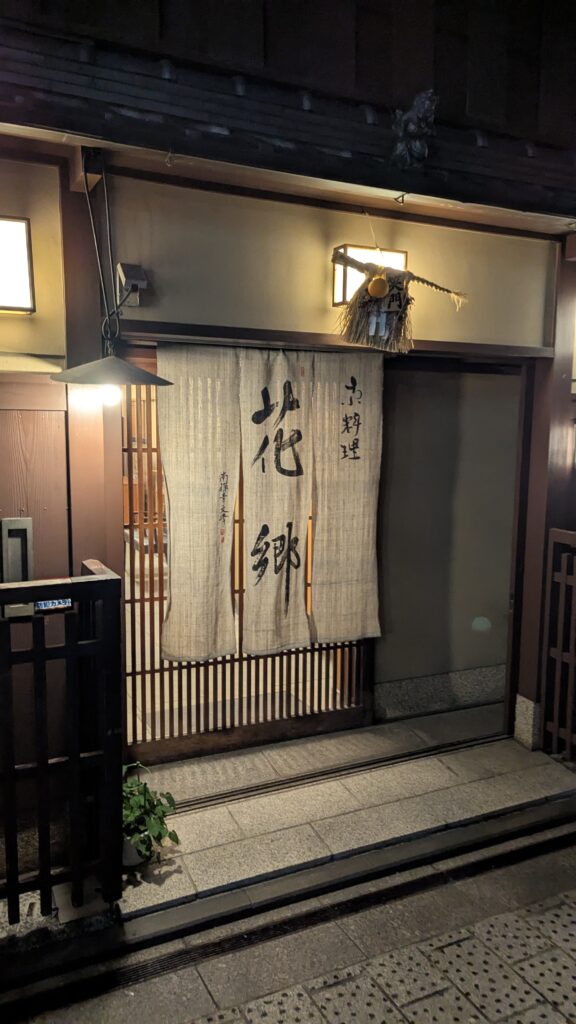
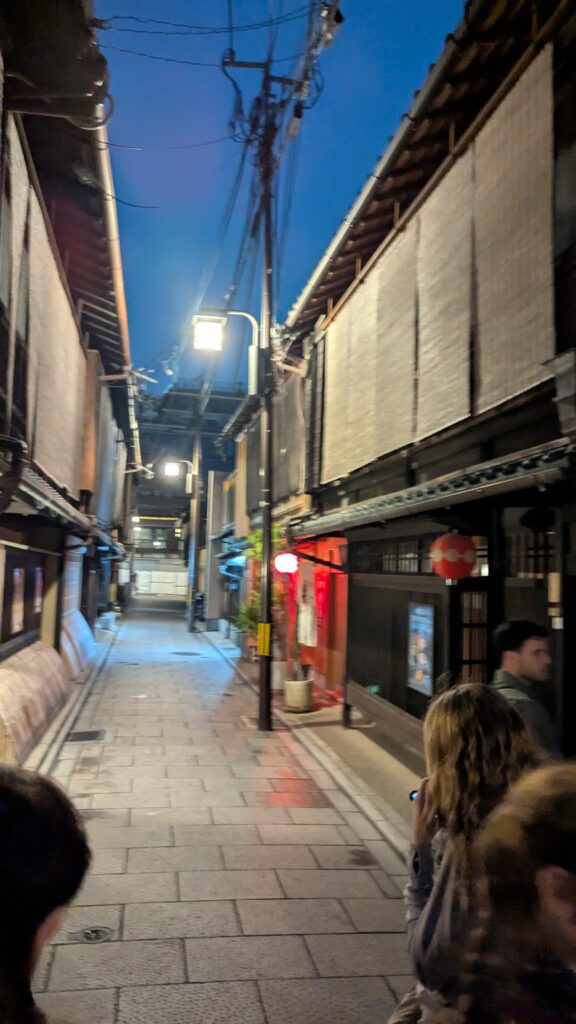
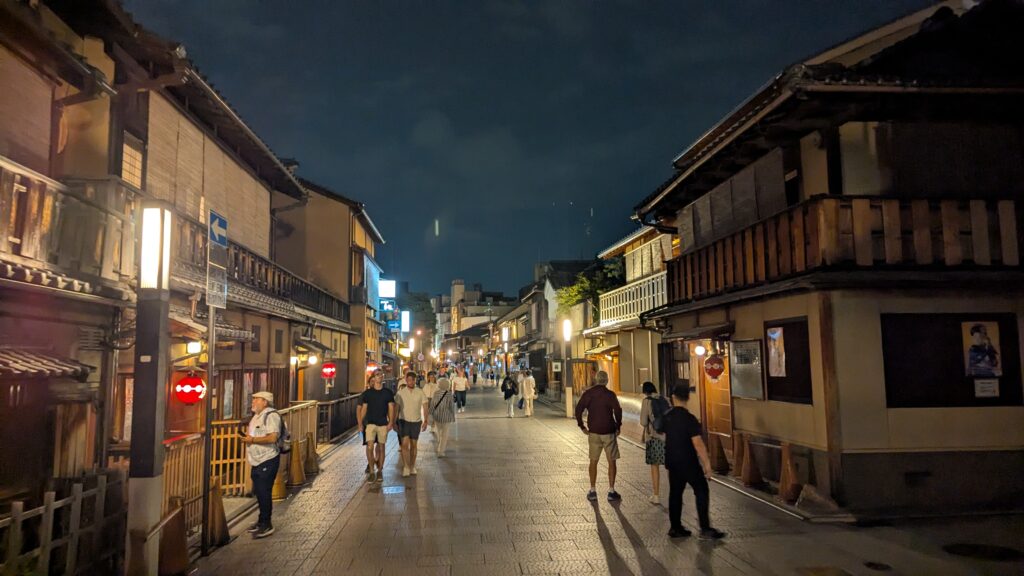
Along the lantern-lit lanes we also heard the origin story of kabuki theatre. It was founded in 1603 by a boundary-pushing woman named Izumo no Okuni who created cross dressing theatre —until officials decided theatre was “unsuitable” for women and banned them from the stage. Even today all the performers are men. Geisha culture, by contrast, weathered that sexist storm and still thrives—though today’s ranks are far smaller (about 200 geiko and 70 maiko in Kyoto). All in all a very interesting tour.
The next morning, we’d booked a “traditional” tea ceremony in an old tea shop that now mainly hosts tourists. It didn’t feel super traditional—there was a PowerPoint, for starters—but it was really interesting. They showed us how the tea’s prepped, how the bell rings in a specific way to kick things off, and all the little customs for pouring and receiving. We sipped matcha from big bowl-like cups (Mum would approve). It was pretty bitter, but the pretty pink bean-paste sweets they handed out took the edge off.
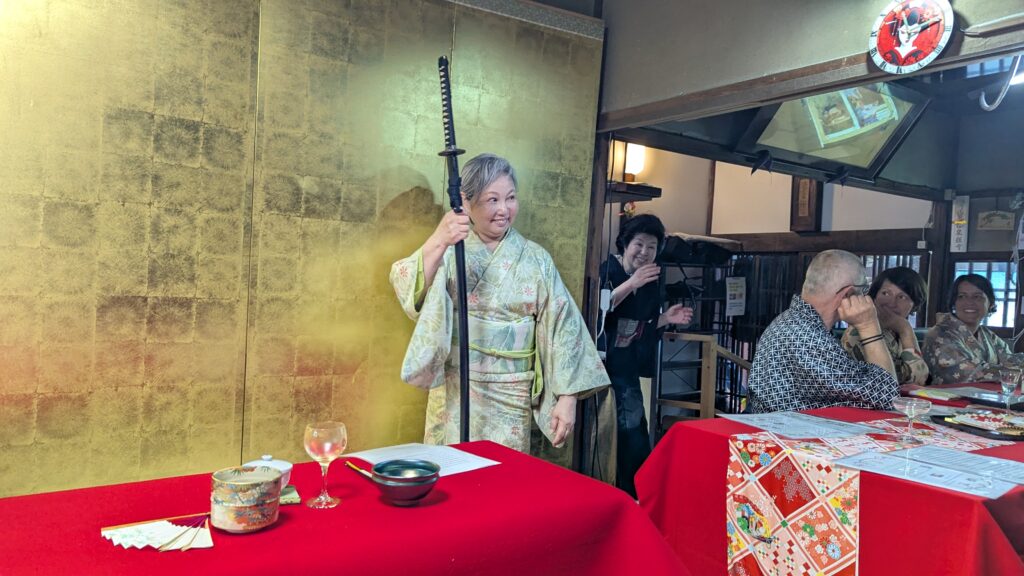
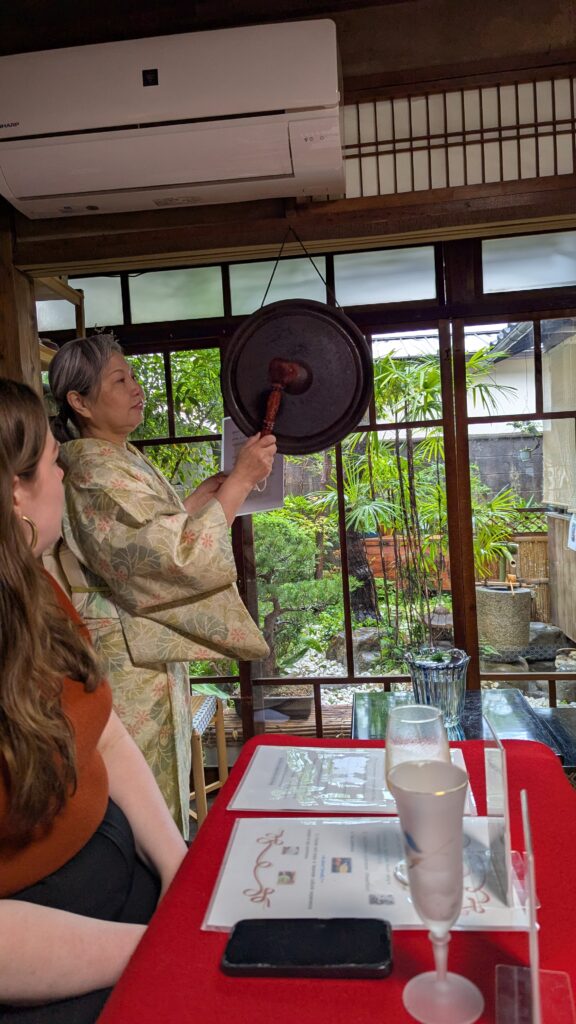

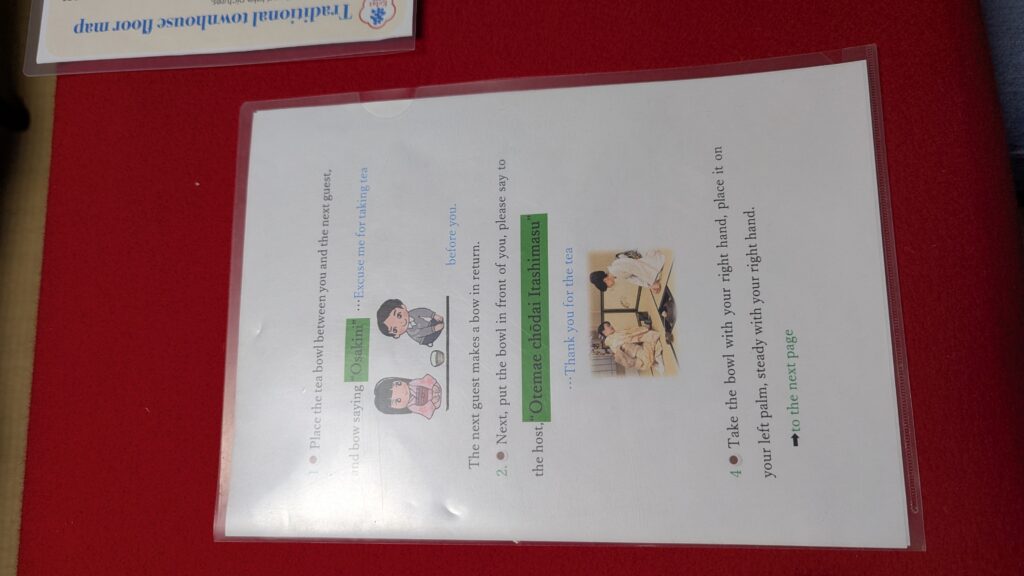
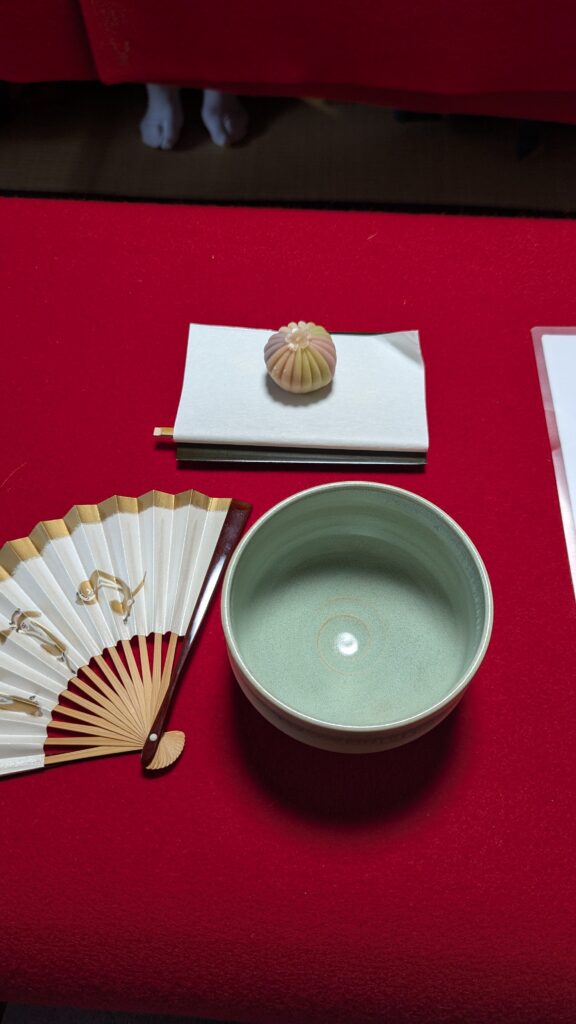
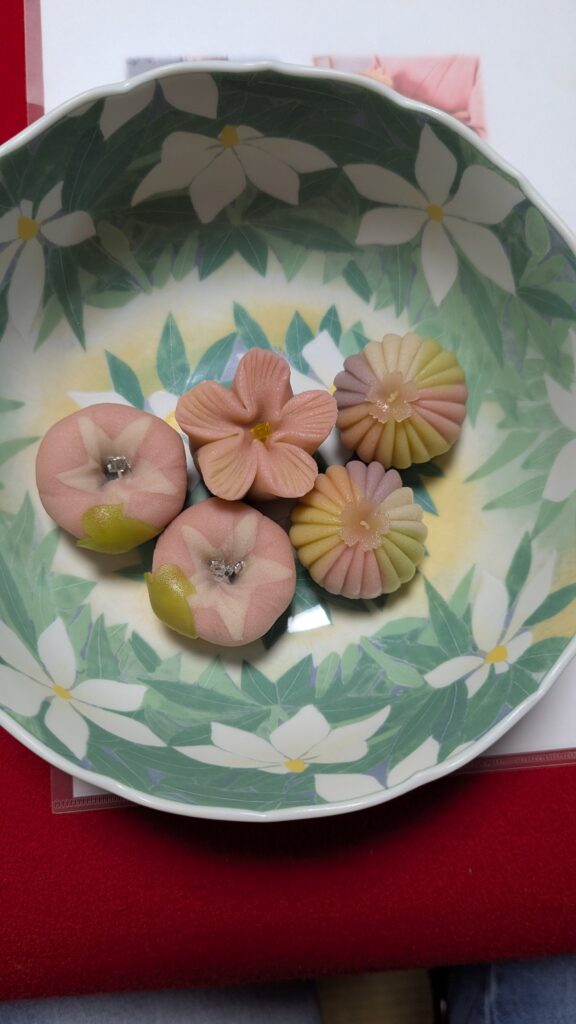
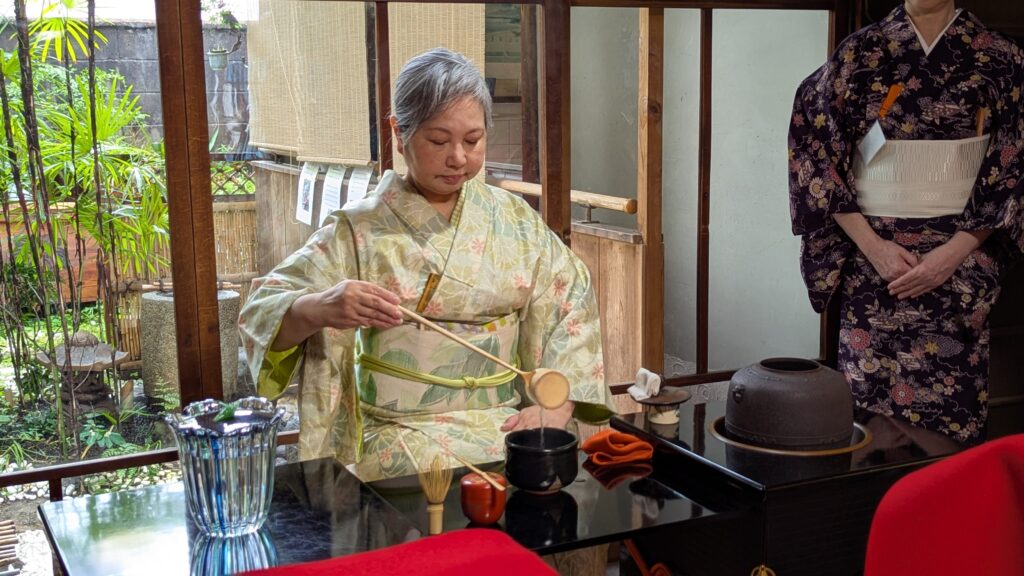
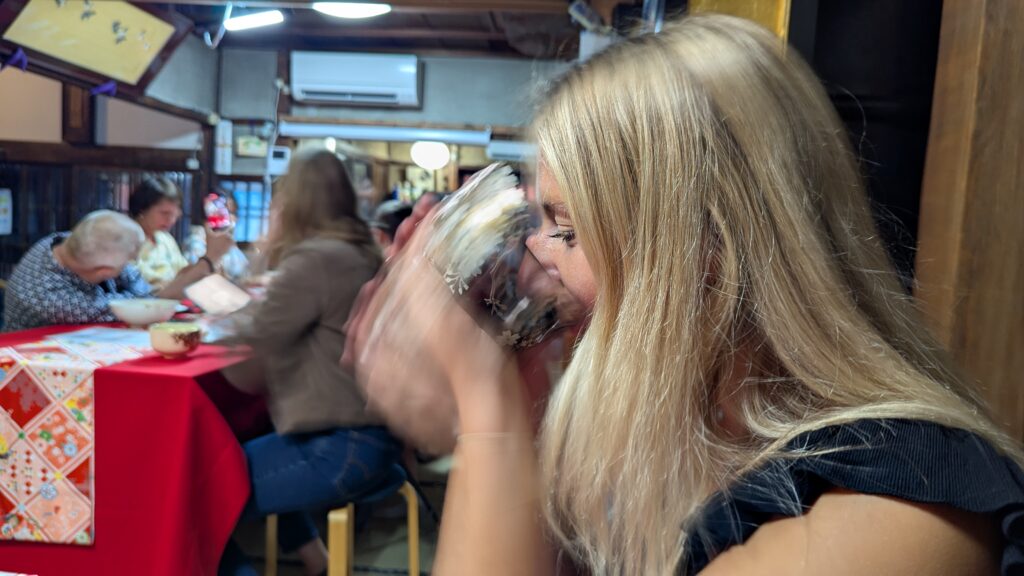
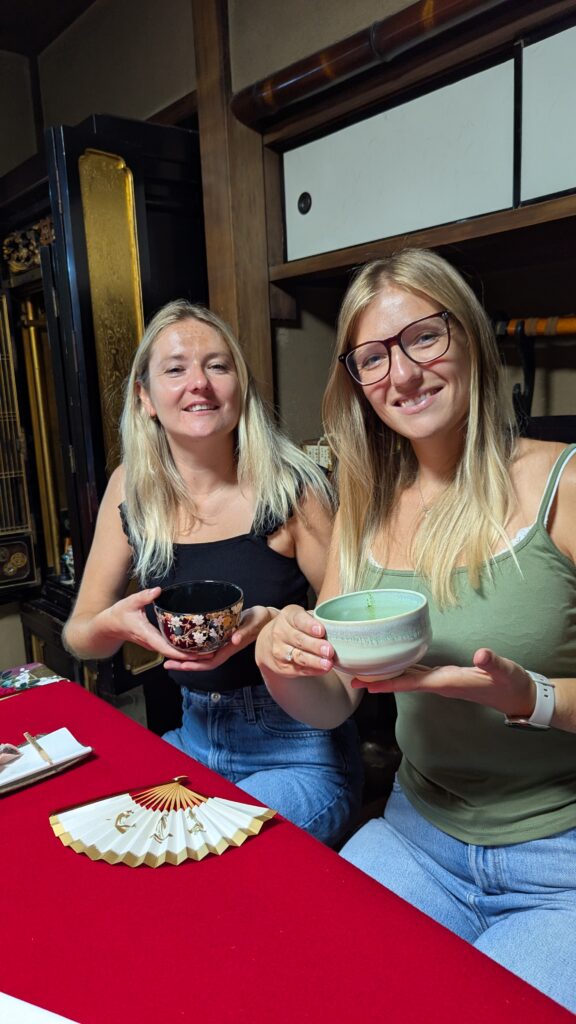
Post-matcha, the host handed us calligraphy brushes so we could attempt our names in kanji—and then kindly supplied the simpler, phonetic kana when our strokes started looking like suspicious wobbly spiders. A surprisingly fun way to spend a morning.
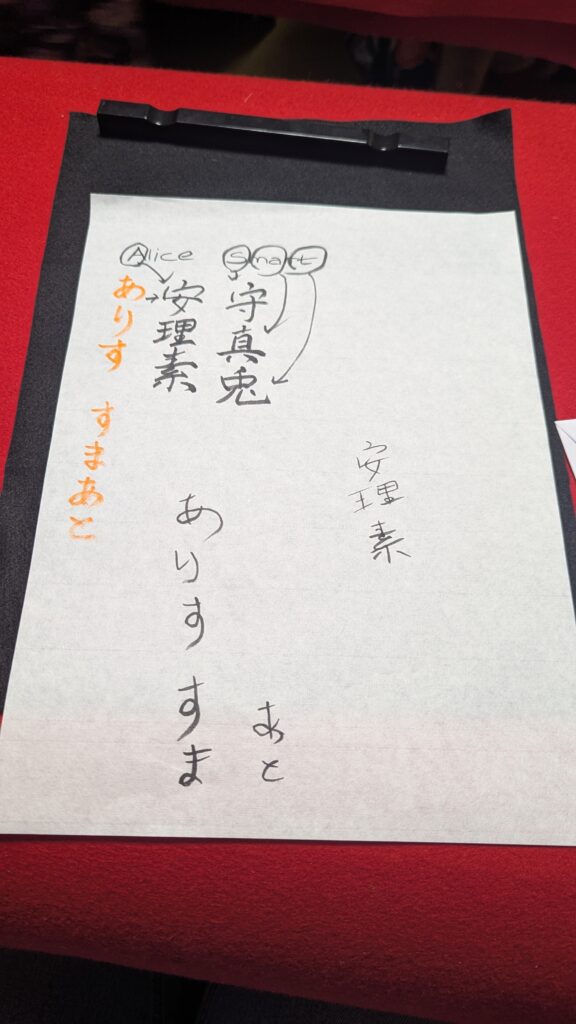
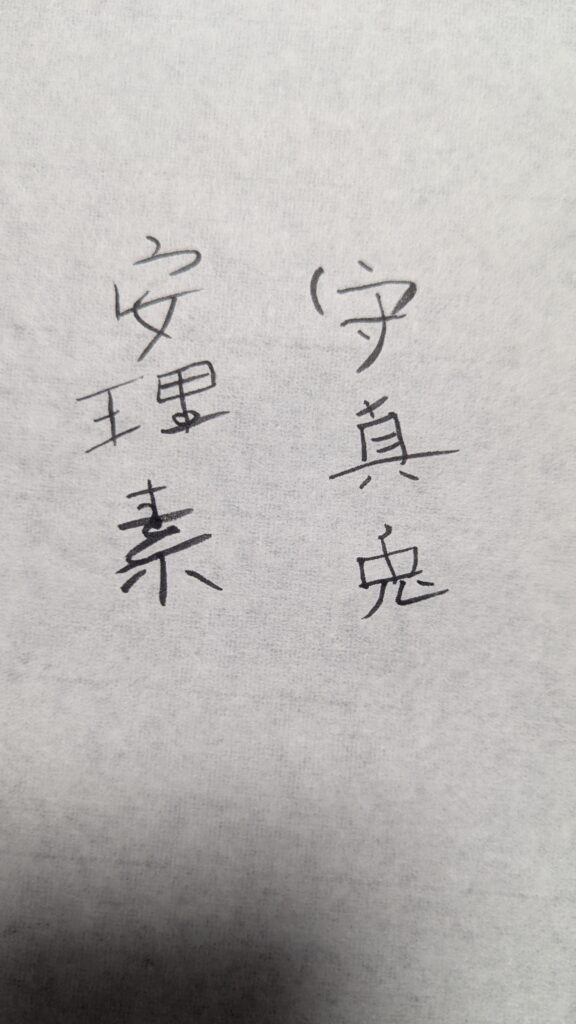
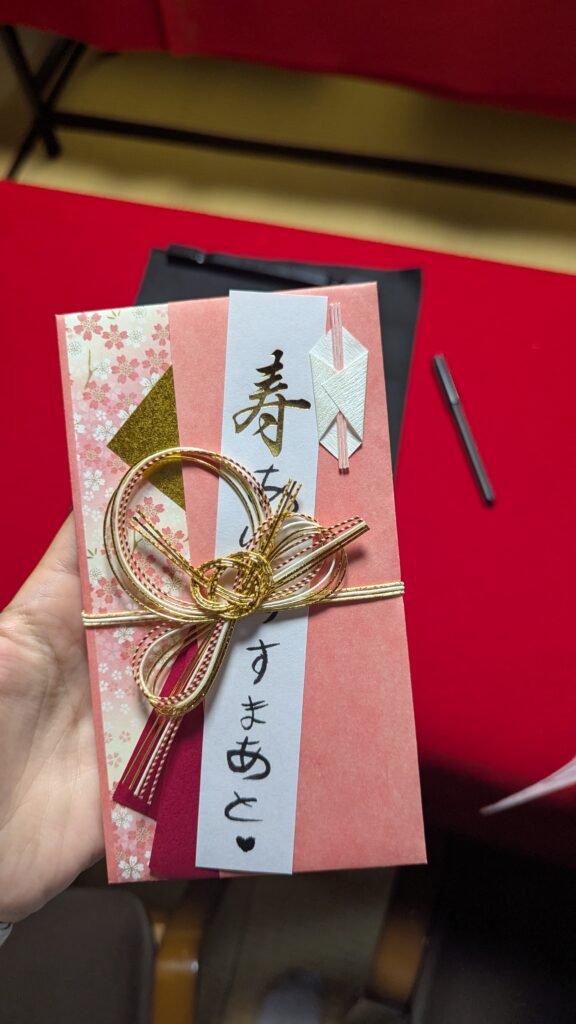
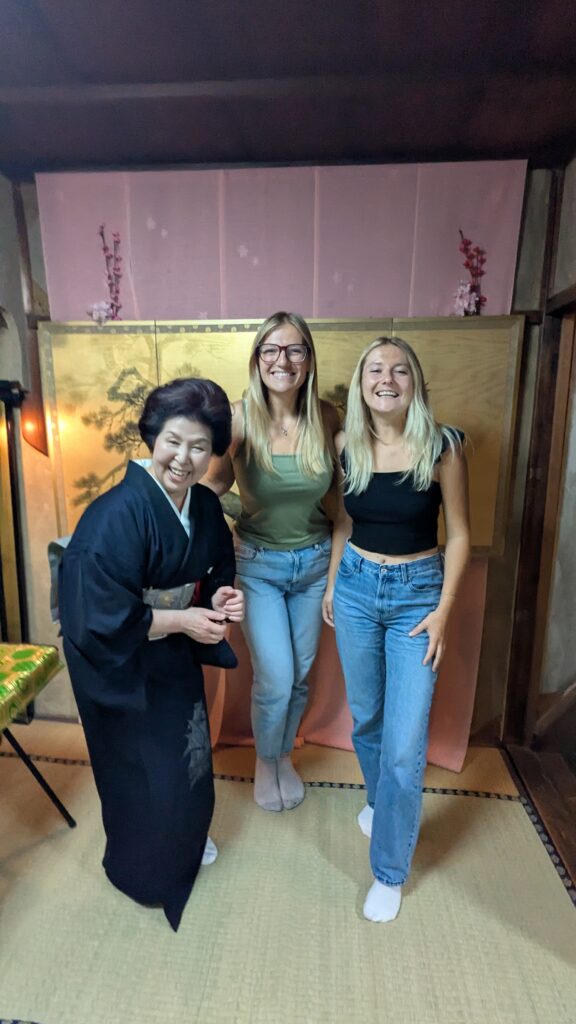
Once we wrapped that up, we hit a yakitori spot the tea ladies recommended. We’d been dying to try those grilled meat skewers, and yep, they were worth the wait.
Re-fueled, we wandered the local market hunting souvenirs and emerged triumphant with “his-and-hers” lightweight summer kimono for us and the boyfriends—basically the fanciest dressing gowns our washing machines will ever see.
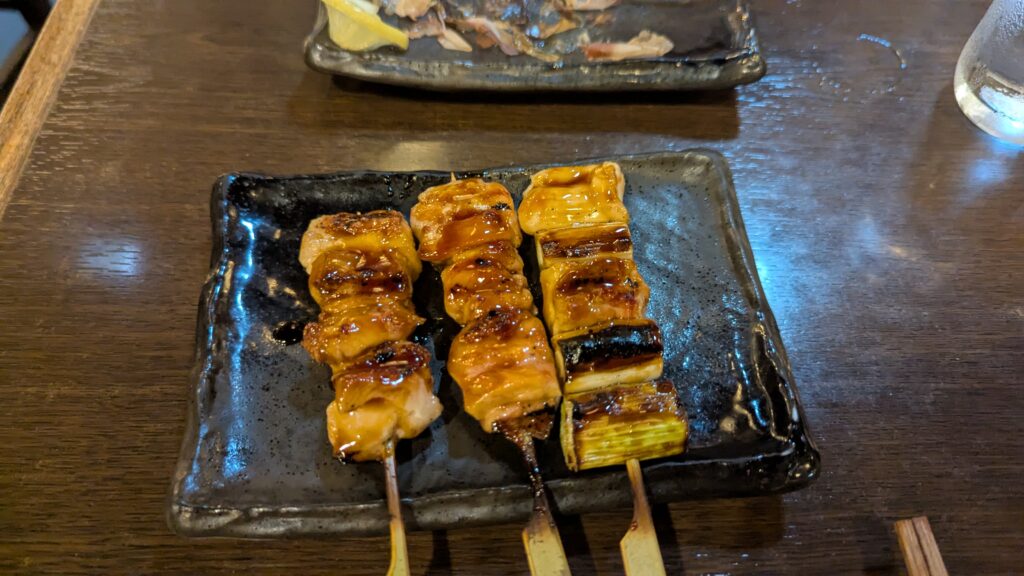
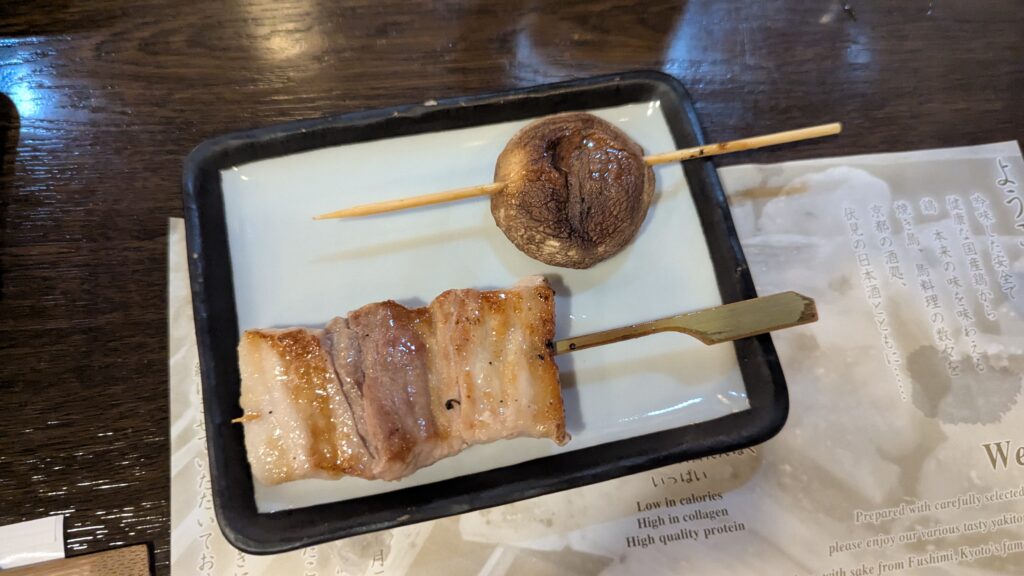
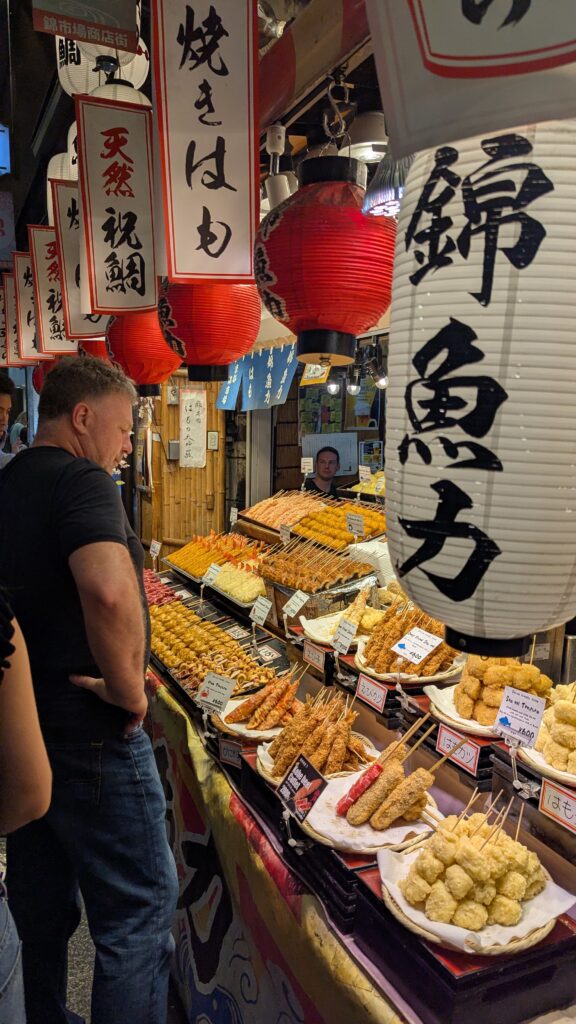
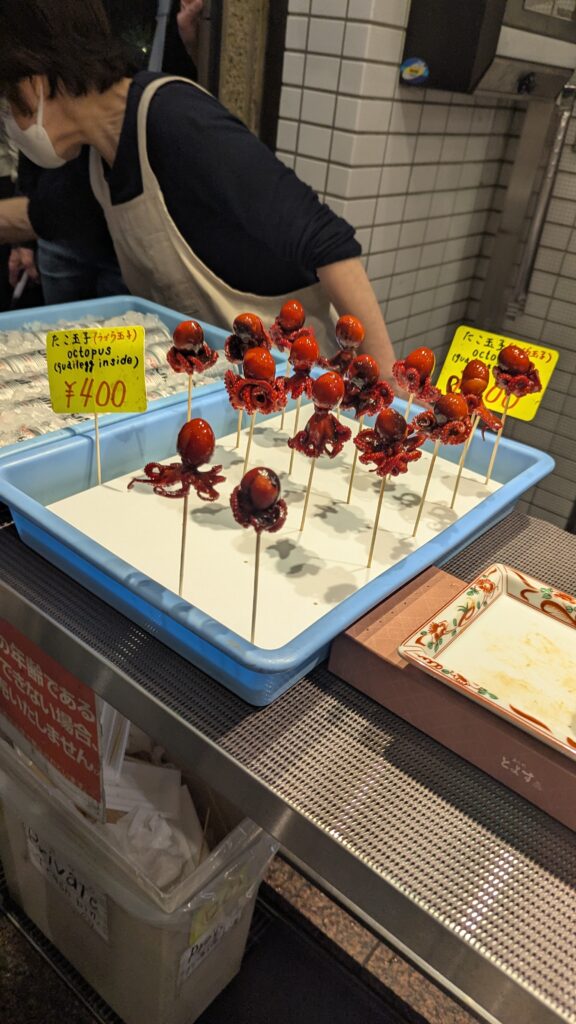
Back at the hostel we showered, then headed out for our evening reservation at Macho Bar. Picture a tiny bar where every staff member is a bodybuilder and literally everyone—guys, girls, 6-foot giants—gets carried to their seat. Each drink came with a mini muscle show; my pineapple cocktail was squeezed tableside while we were encouraged (okay, forced) to poke biceps. I spent half the night bright-red from embarrassment, but watching hulking dudes get princess-carried by guys half their size was hilarious. Once we’d hit our personal limit for public blushing, and heard enough shouts of “LOOK AT MY MUSCLES—SO BIG!” (now mine and Grace’s favorite catchphrase), we bailed for a small bar someone in Tokyo had recommend.
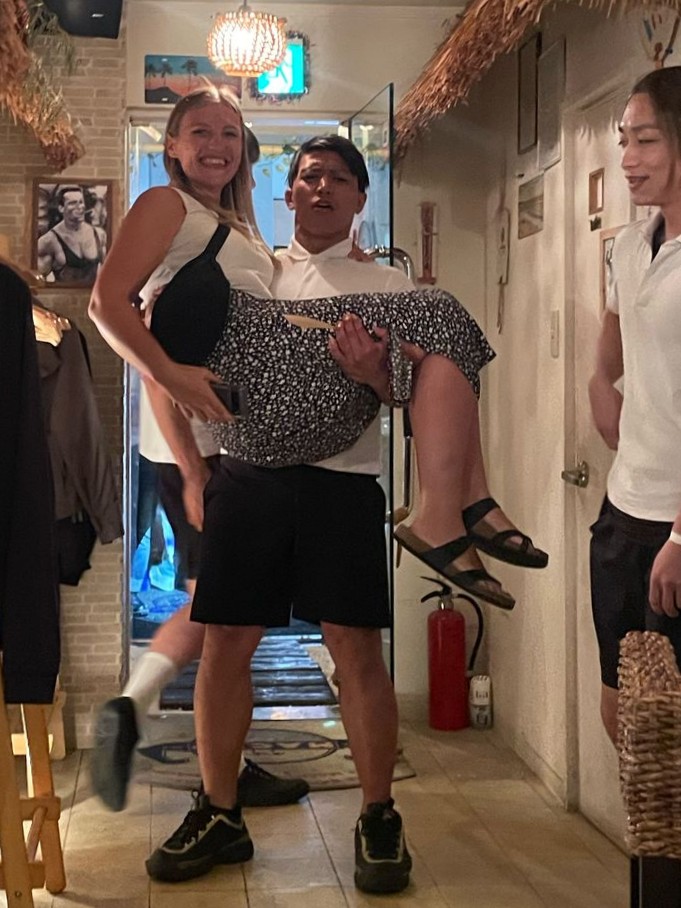
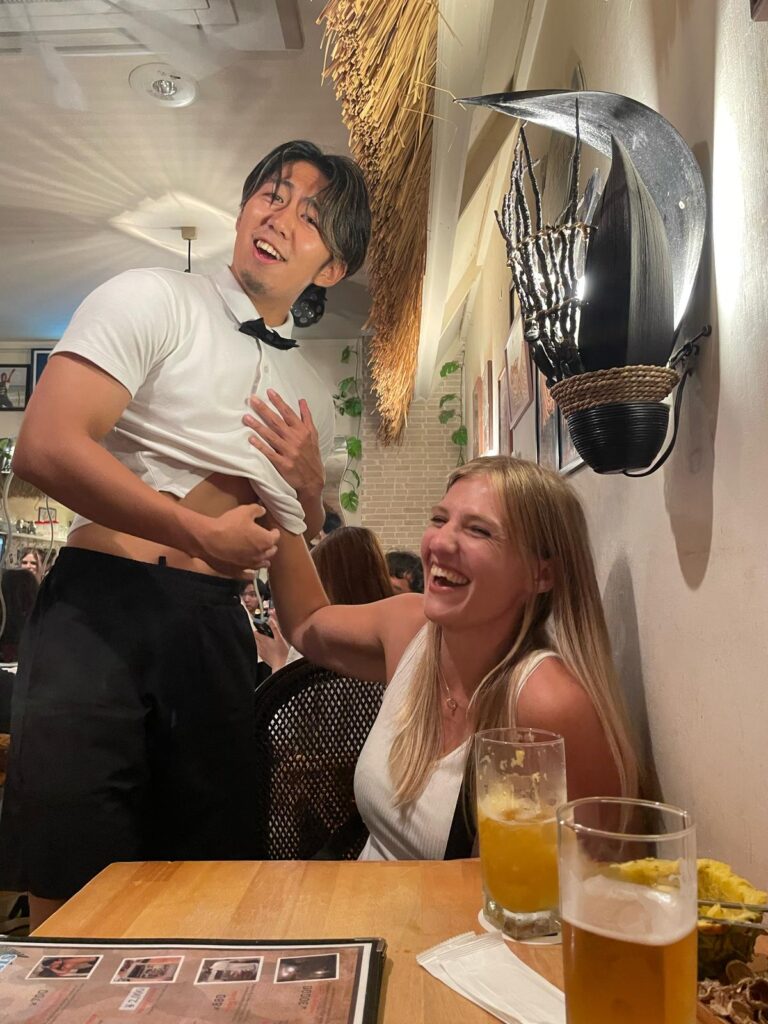

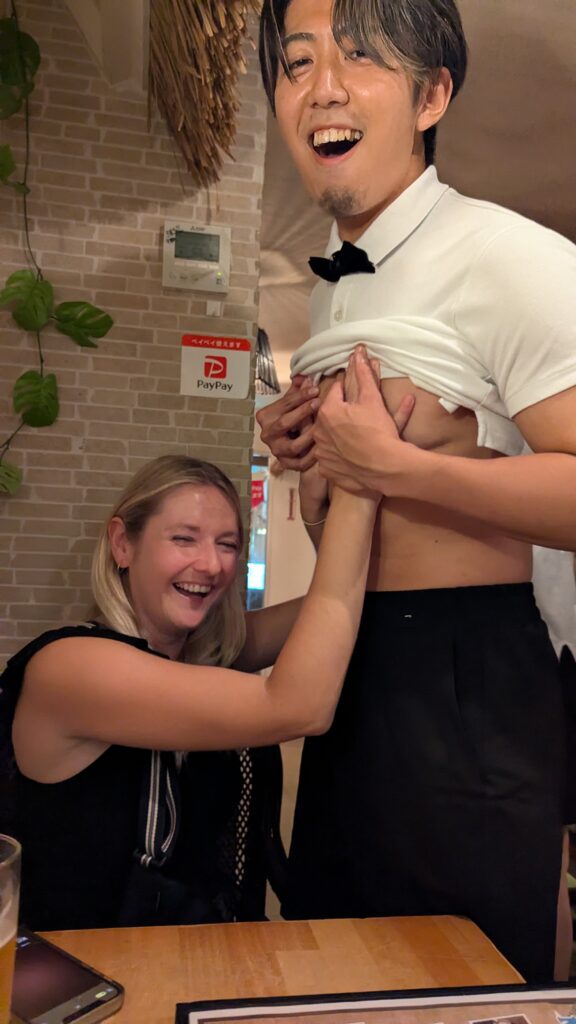
That place was great too—we met four American siblings from New York, chatted, danced, and then Grace (yes, karaoke-hating Grace!) dragged us all to a karaoke bar. Three months in Asia will do that to a girl. It was an awesome night… though we definitely felt it the next morning!
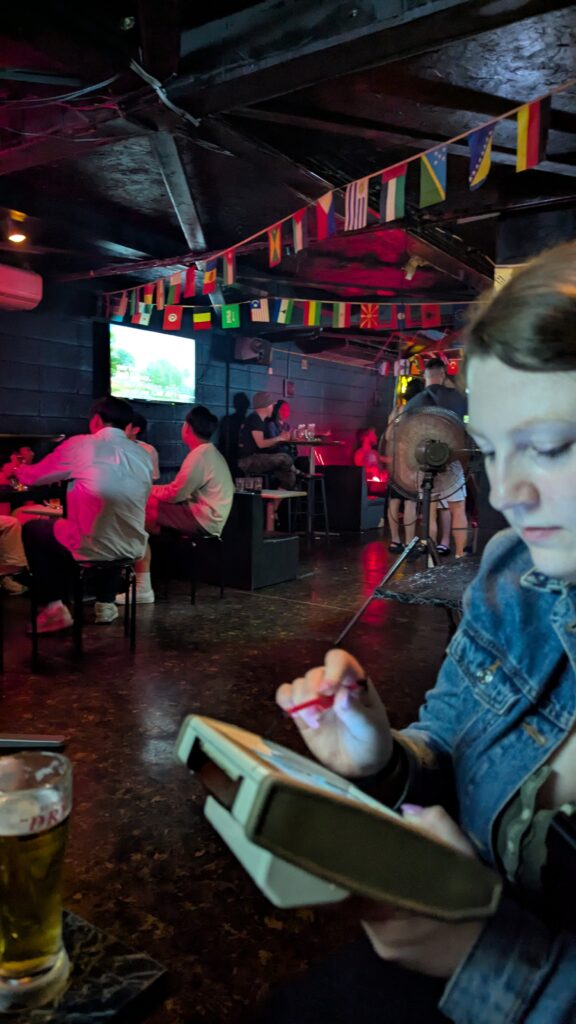
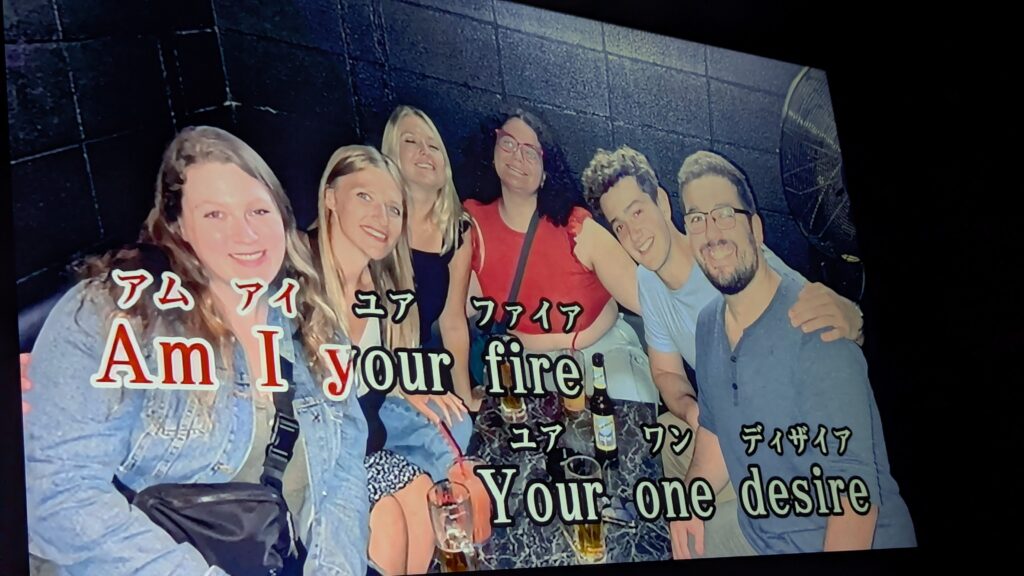
Feeling a bit rough around the edges, we dragged ourselves out for another walking tour the next morning. It started on a pretty sour note—while the guide was giving the intro, some creep in a business suit groped Grace and bolted before we could react. Absolutely vile, but we tried not to let it ruin the day.
Things improved once we reached the Kamo River. Our guide explained how locals have reshaped its course over the centuries, dredging and straightening to control floods and create gentle banks. Every summer, restaurants along the water build wooden decks (called noryō-yuka) that hover above the river’s cool evaporative breeze—perfect natural air-con. They’re dismantled each winter so the planks don’t crack under frost or spring floods.
Next stop: Chion-in Buddhist temple, headquarters of the Jōdo sect—the “Buddhism Lite” the samurai preferred because it skips awkward prohibitions on meat, booze, and, well, killing. The buildings are enormous Lego sets of interlocking cedar, no nails required, and the surrounding gardens are beautiful and full of couples in traditional clothing having photoshoots.
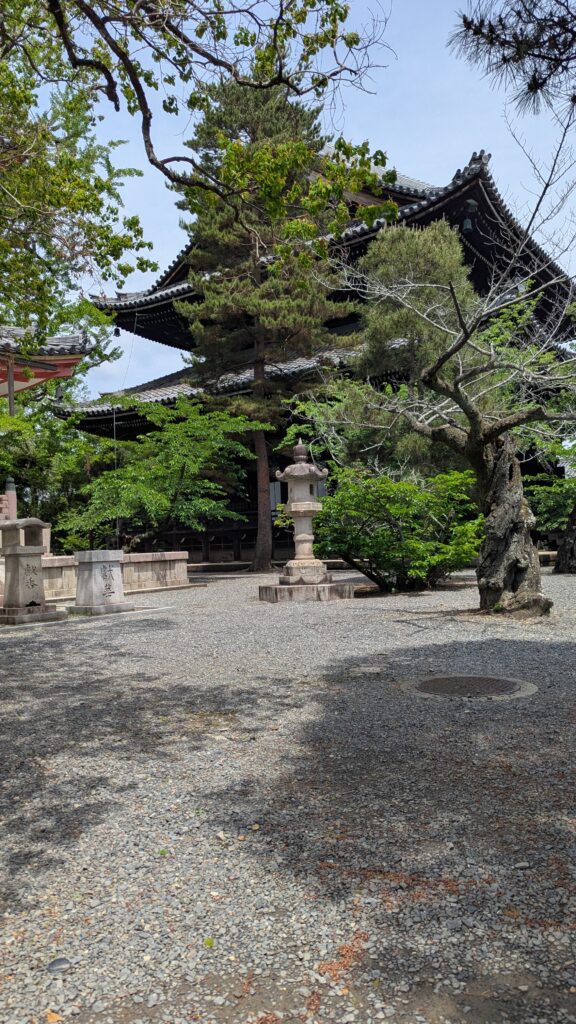
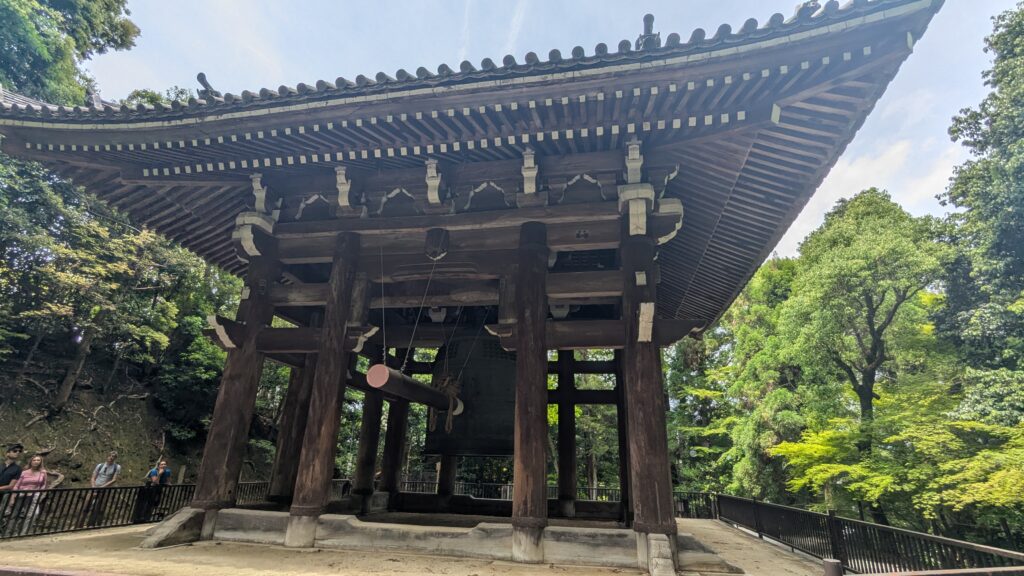
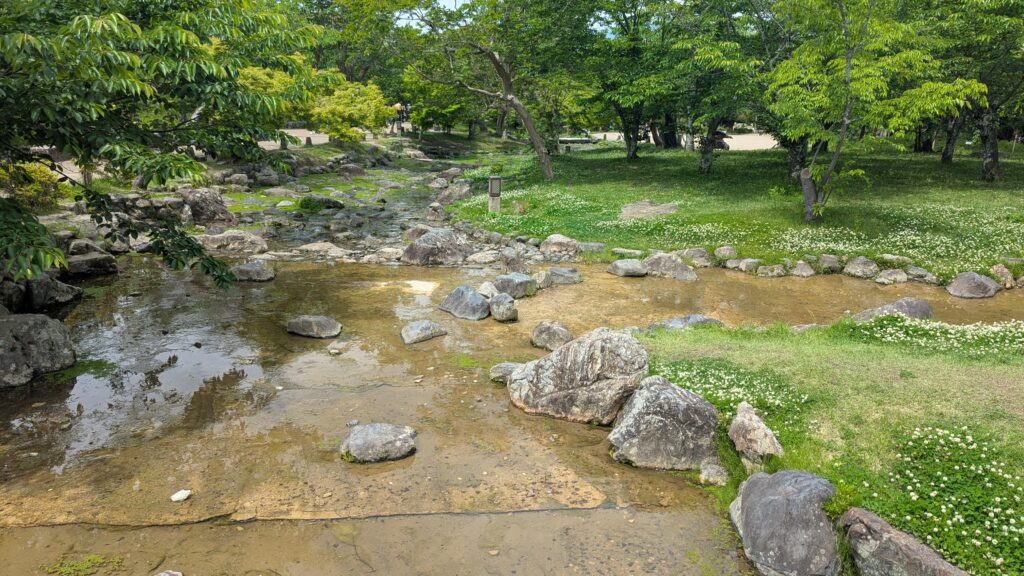
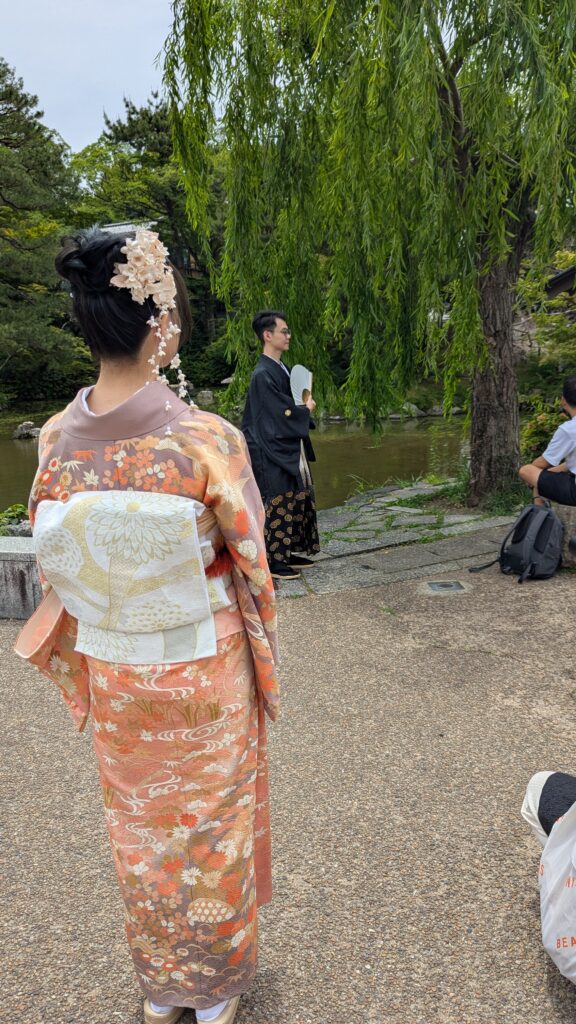
We visited a samori statue and our guide painted a vivid story of how the samori were split during a civil war between the last shogun and the emperor and it ended of course in bloodshed. We continued to Hōkan-ji, a temple covered with bright prayer balls, and finished the tour at Yasaka’s five-storey pagoda that photobombs half the postcards in town. The streets here were packed all the way up to it and trying to avoid the crowds on the way down we discovered a back route through a cemetery which was actually pretty interesting to stroll through and conveniently even had a vending machine with some water. Japan really does put vending machines everywhere and anywhere even graveyards!
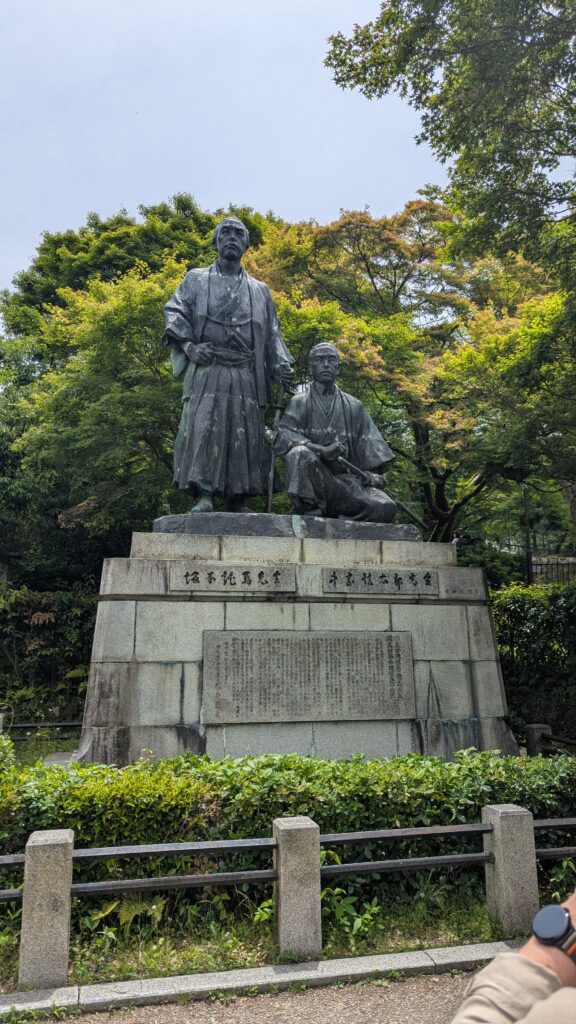
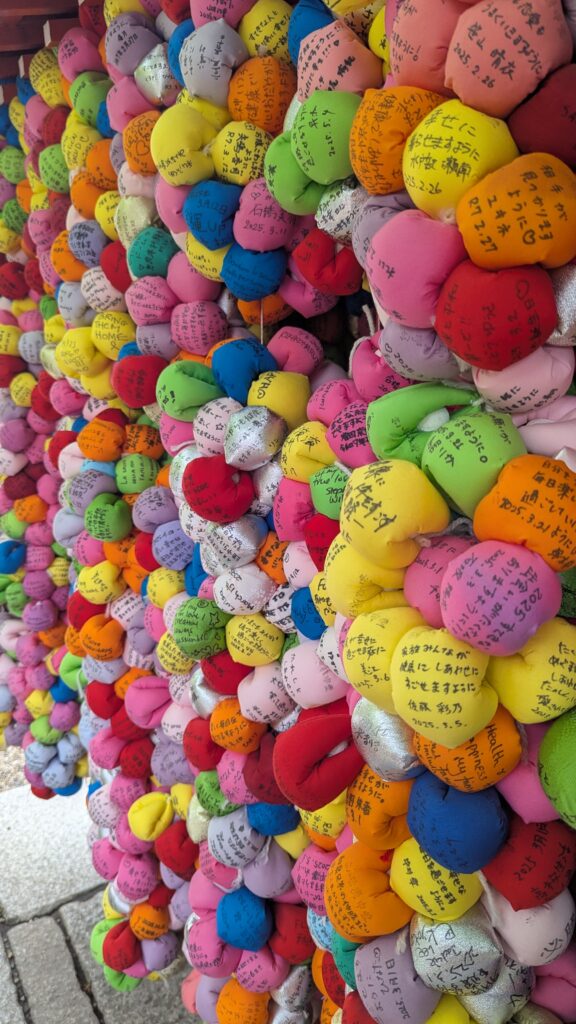
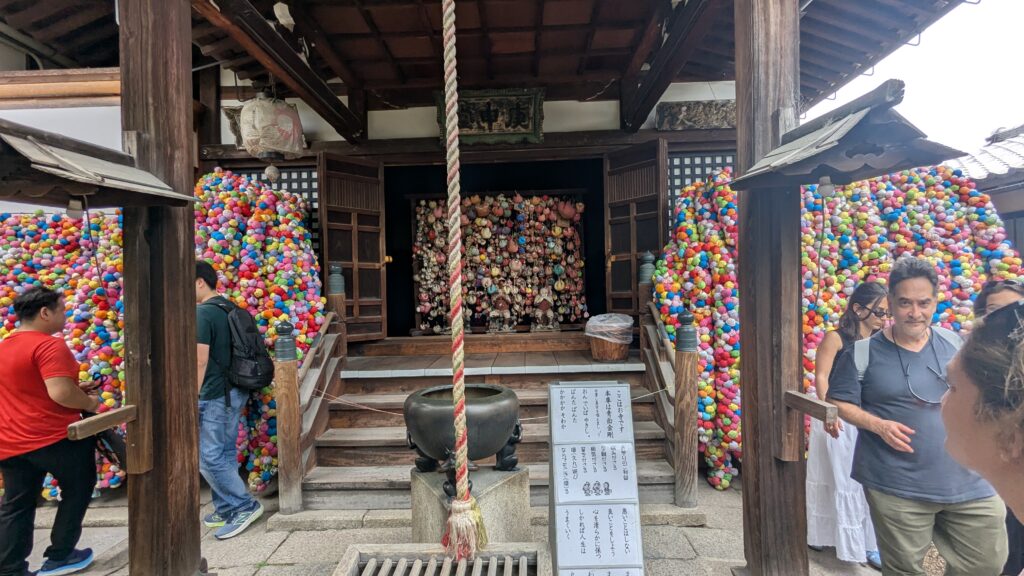
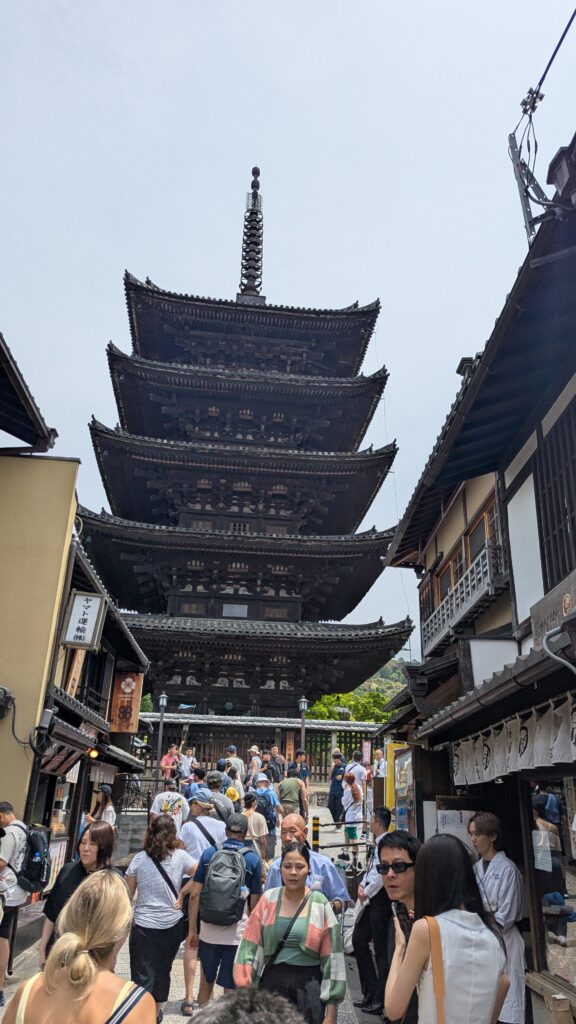
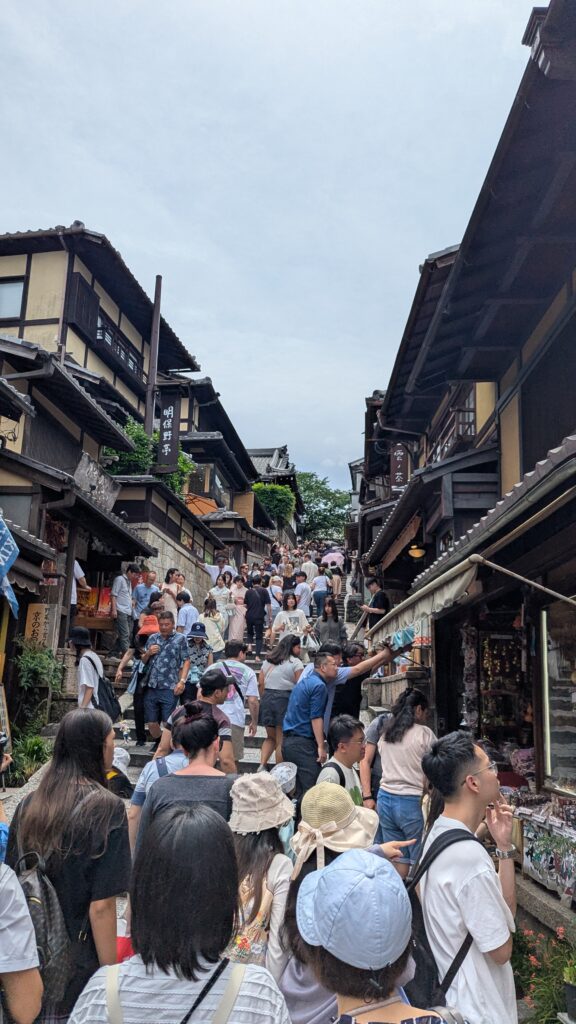
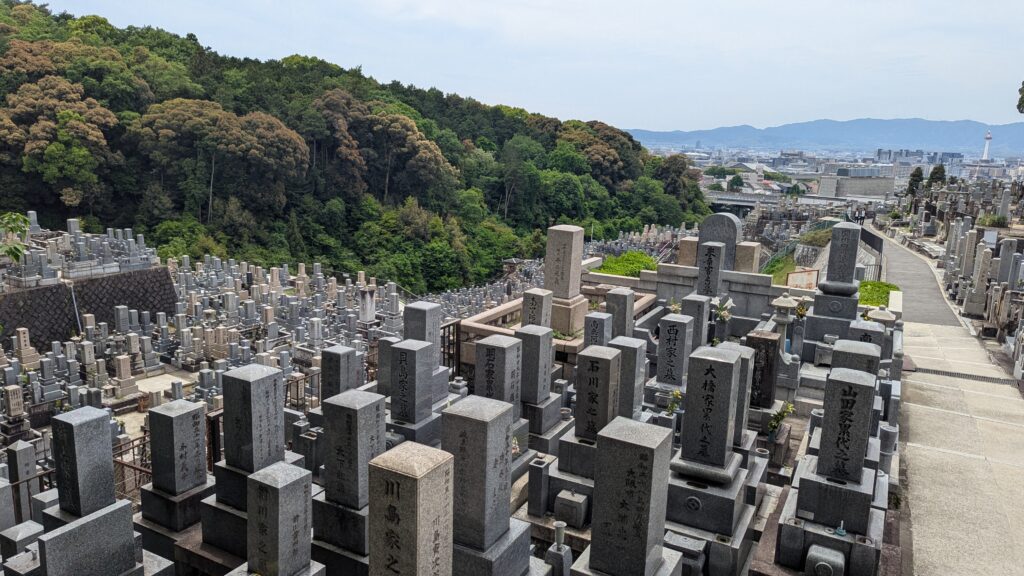
After three hours of walking hungover in 28°c heat we were a little worse for ware. We staggered into a café to refuel. Grace chose a “dry curry,” Japan’s wholesome remix of an Indian keema curry—same aromatics, but the sauce is replaced by finely diced veggies. My stomach mutinied at the thought of spice, so I played it safe with a chicken-salad sarnie.
Restored, we trained south to Fushimi Inari’s Senbon Torii—the “Path of a Thousand Gates.” At the base it’s selfie chaos, but after ten minutes of climbing the crowd thins dramatically. It’s beautiful and enjoying the shade we trekked until the slope turned too steep, deciding 25,000 steps was plenty for the day, and went in search of a ramen dinner.
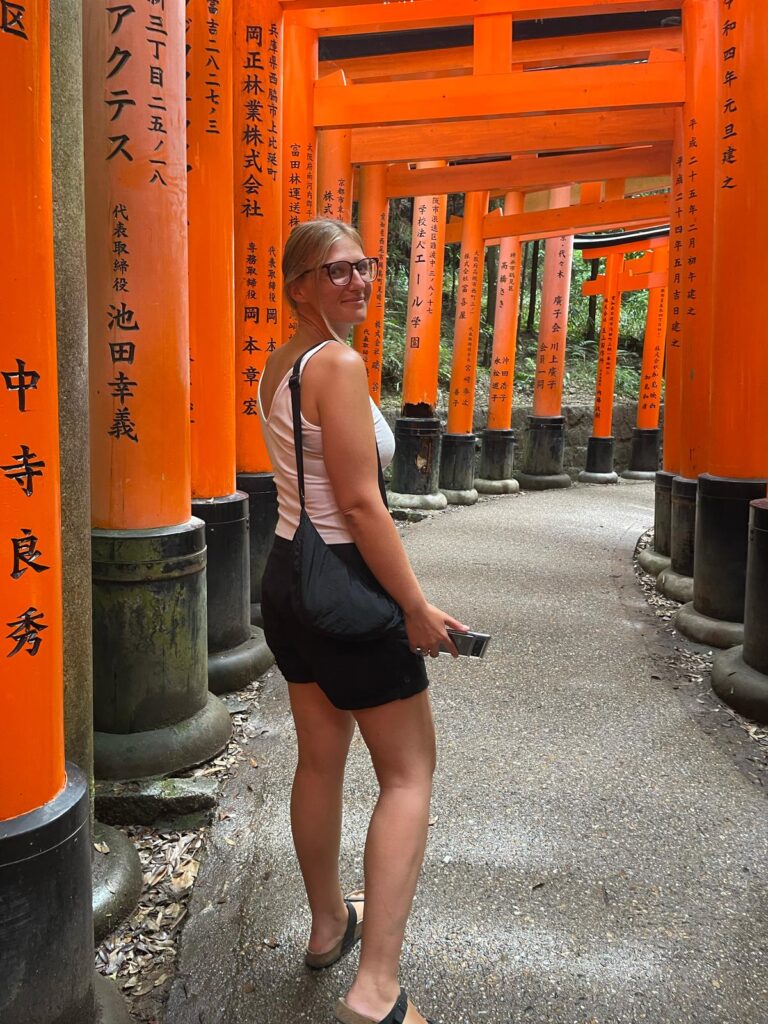
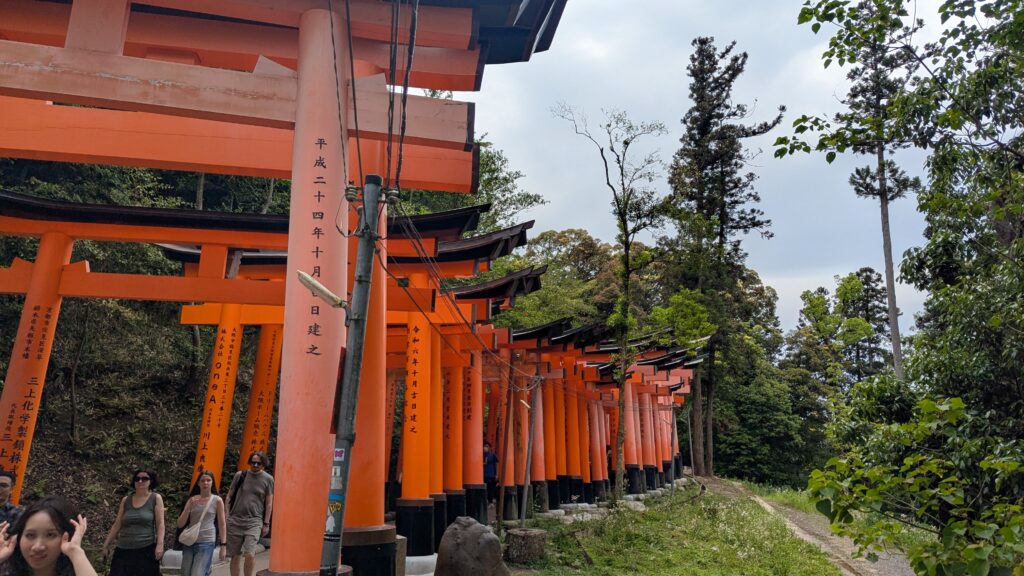
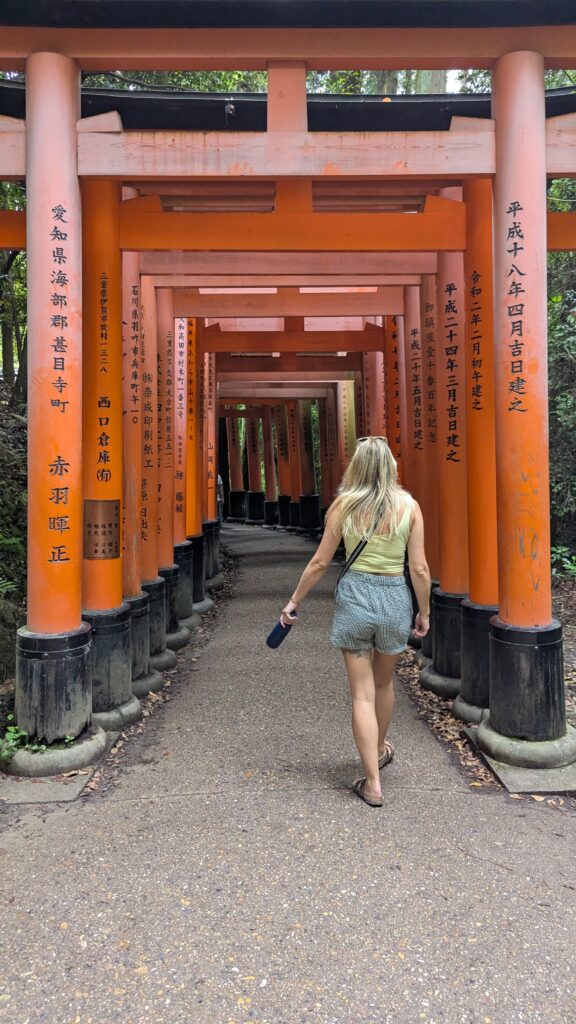
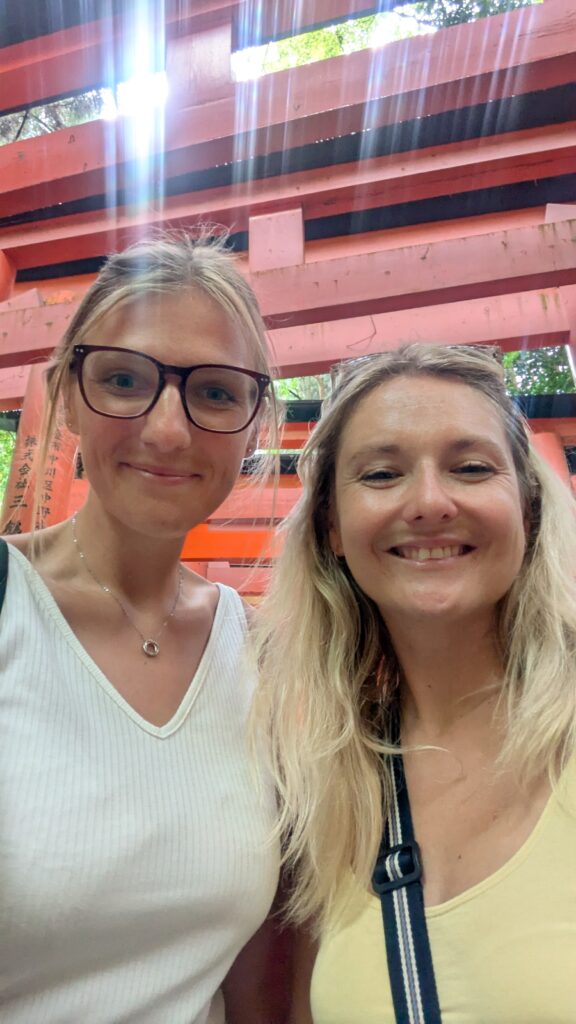
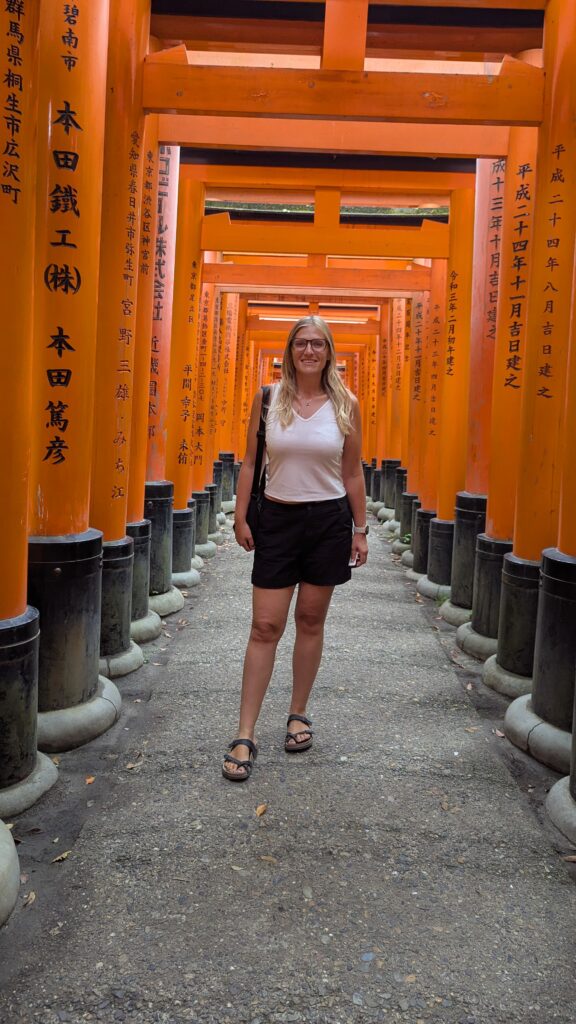
We decided against getting a large ramen, turned out to be a good decision, even the “regular” bowls were roughly the size of a birdbath—bloody tasty though.
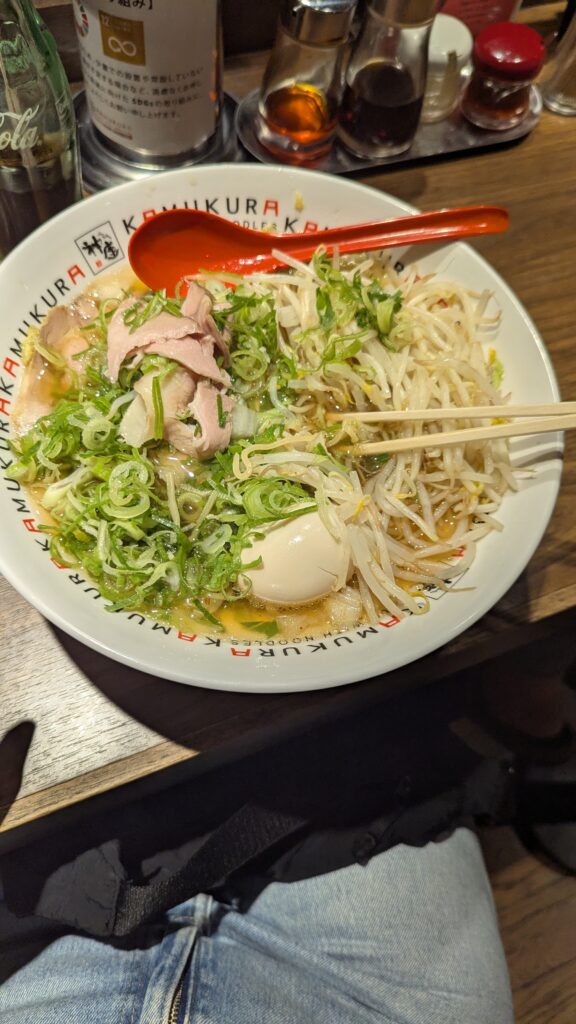
The next day was a travel day but as Osaka is only an hour away, we treated ourselves to a lie-in, checked out, stashed our packs, and prowled the nearby market for breakfast. Ended up in a trippy 2-D café where everything, walls, floors, and furniture are painted like comic-book sketches. Very cool.

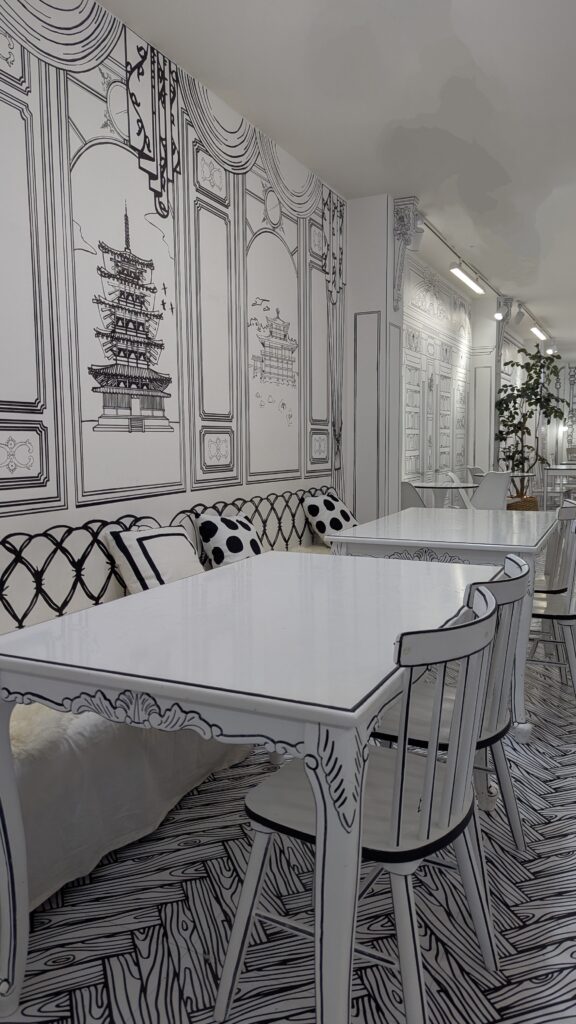
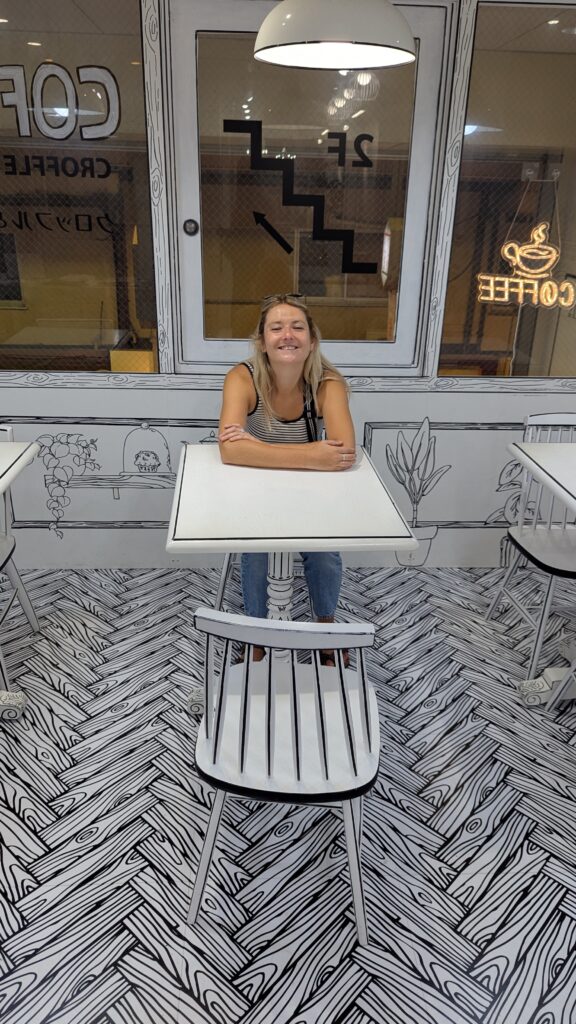
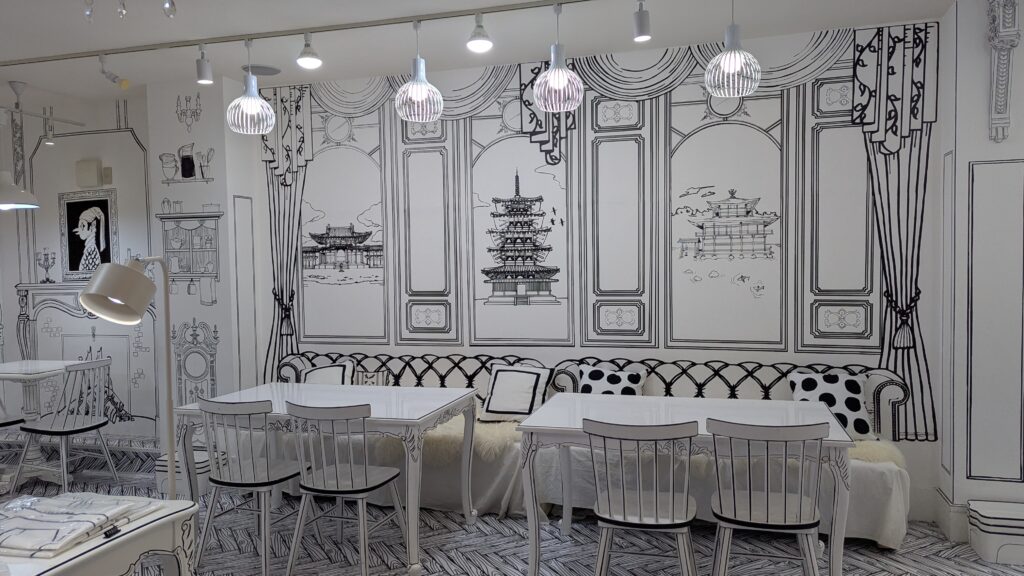
After a chill morning we collected bags and hopped the train to Osaka.
Tell you all about it soon. Love, Alice x
